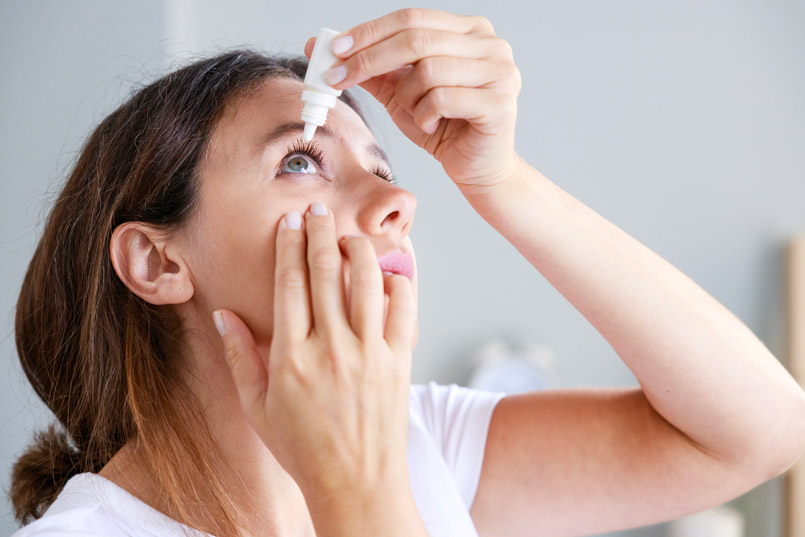Eye drops are liquid medications that you can put in your eyes a drop at a time. There are many types of eye drops. Knowing which type to use and how to use them safely is essential to taking good care of your eye health. And knowing how and when NOT to use eye drops can be just as important.
Advertisement
Cleveland Clinic is a non-profit academic medical center. Advertising on our site helps support our mission. We do not endorse non-Cleveland Clinic products or services. Policy

Eye drops are liquid solutions you put on the surface of your eyes, a drop or two at a time. Eye drops are topical, meaning you simply put them on your eyes’ surface. Once there, they can do their job.
Advertisement
Cleveland Clinic is a non-profit academic medical center. Advertising on our site helps support our mission. We do not endorse non-Cleveland Clinic products or services. Policy
Eye drop solutions can contain a variety of different medications and beneficial substances. And because eye drops contain different combinations of ingredients or medications, they can treat many different eye conditions, symptoms and concerns.
Eye drops can do different jobs depending on what’s in them. Some ingredients in eye drops are common in over-the-counter (OTC) drops, while others come in prescription drops only.
OTC eye drops can have ingredients that do the following:
Advertisement
Prescription eye drops have ingredients that do the following:
There are many advantages and benefits to using eye drops, and they vary widely depending on which type of drops you use, why you use them and how well they work.
Some of the general advantages of eye drops include:
There are a few things everyone should be aware of when it comes to eye drops:
Advertisement
It’s a good idea to talk to your eye care specialist if you experience any eye issues that you think eye drops might be able to treat. An eye specialist can determine if the condition is treatable with eye drops and recommend specific types of products.
You should also call or see your eye specialist if:
There’s no universal way to answer this question because of all the factors in play.
Think of eye drops like tools in a tool set. You have different tools for different jobs or purposes. Using the wrong tool for the job may just keep you from doing what you wanted, or it could have the opposite effect and cause harm instead. This is why talking to an eye care specialist is so important. They can tell you which eye drop product is best for you. They can also guide you on avoiding eye drops that won’t help or will cause harm.
In the United States, the Food and Drug Administration (FDA) regulates all eye drop products. They regularly issue updates about recalls and other safety-related eye drop issues. If you live outside the U.S., contact your healthcare provider or government agencies that oversee medication and medical product safety. This information changes frequently, so it’s a good idea to check recalls before you buy new eye drops.
Advertisement
The answer to this question varies. You should always look for eye drops that treat the issue you’re having. And always be sure to read the labels closely. Some other things are ones you should definitely avoid when buying eye drops.
Some conditions are too serious for OTC eye drops to treat. Conditions that have no OTC treatment include:
Eye drops in the U.S. should never contain the following:
Some important things to know about using eye drops include:
Advertisement
When your eyes hurt or are bothering you for some reason, it may feel hard to focus on anything else. All you know is you’ll go to great lengths to make your eyes feel better. Eye drops may help you, but it’s important to use them properly and safely.
“Over-the-counter” doesn’t mean eye drops are automatically safe. Be sure to talk to your eye care specialist to make sure you’re getting the right product and using it correctly. That way, you can focus on feeling better, drop by drop.
Getting an annual eye exam at Cleveland Clinic can help you catch vision problems early and keep your eyes healthy for years to come.

Last reviewed on 07/19/2024.
Learn more about the Health Library and our editorial process.